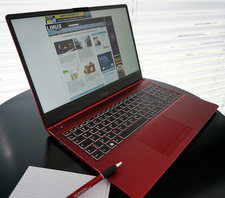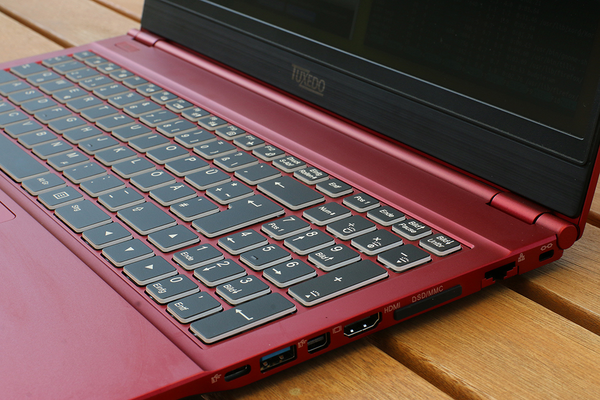Tuxedo InfinityBook Pro 15 v4
Lean Machine

A Linux-friendly alternative to Dell and Apple, the Tuxedo InfinityBook Pro 15 v4 offers a bigger screen at an affordable price, all without sacrificing portability.
Business notebooks come in different designs for different applications. Lenovo is known for its rugged but not very elegant ThinkPads, Dell for its slim and stylish XPS models, and Apple for its MacBooks. The InfinityBook series by Linux specialist Tuxedo is known for its “chic and lean” design. The latest generation of Tuxedo’s lean machine is the InfinityBook Pro 15.
To test out Tuxedo's lean machine, we put the InfinityBook Pro 15 v4 Red Edition through its paces.

[...]
Buy Linux Magazine
Subscribe to our Linux Newsletters
Find Linux and Open Source Jobs
Subscribe to our ADMIN Newsletters
Support Our Work
Linux Magazine content is made possible with support from readers like you. Please consider contributing when you’ve found an article to be beneficial.

News
-
Debian Unleashes Debian Libre Live
Debian Libre Live keeps your machine free of proprietary software.
-
Valve Announces Pending Release of Steam Machine
Shout it to the heavens: Steam Machine, powered by Linux, is set to arrive in 2026.
-
Happy Birthday, ADMIN Magazine!
ADMIN is celebrating its 15th anniversary with issue #90.
-
Another Linux Malware Discovered
Russian hackers use Hyper-V to hide malware within Linux virtual machines.
-
TUXEDO Computers Announces a New InfinityBook
TUXEDO Computers is at it again with a new InfinityBook that will meet your professional and gaming needs.
-
SUSE Dives into the Agentic AI Pool
SUSE becomes the first open source company to adopt agentic AI with SUSE Enterprise Linux 16.
-
Linux Now Runs Most Windows Games
The latest data shows that nearly 90 percent of Windows games can be played on Linux.
-
Fedora 43 Has Finally Landed
The Fedora Linux developers have announced their latest release, Fedora 43.
-
KDE Unleashes Plasma 6.5
The Plasma 6.5 desktop environment is now available with new features, improvements, and the usual bug fixes.
-
Xubuntu Site Possibly Hacked
It appears that the Xubuntu site was hacked and briefly served up a malicious ZIP file from its download page.

